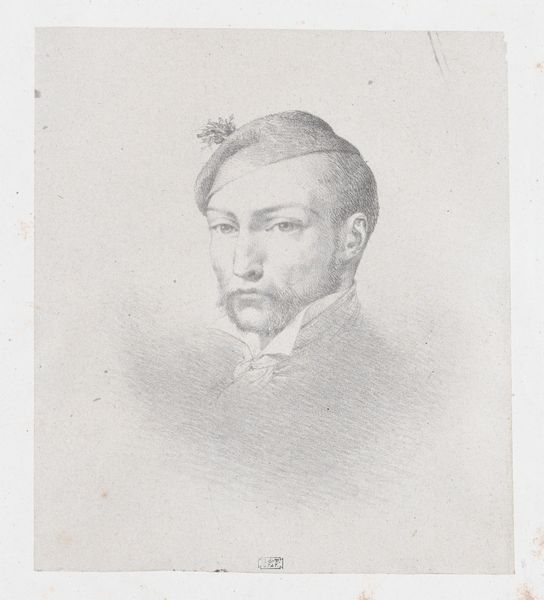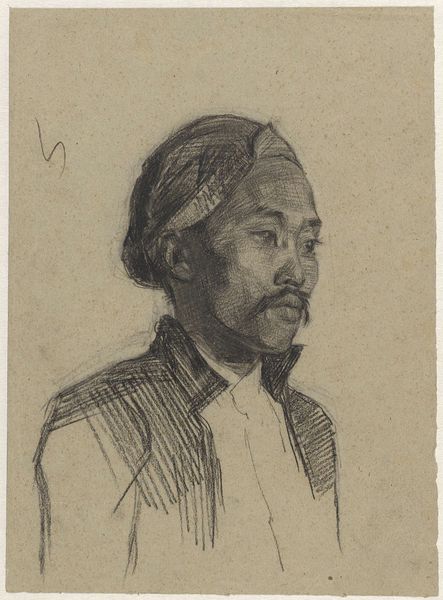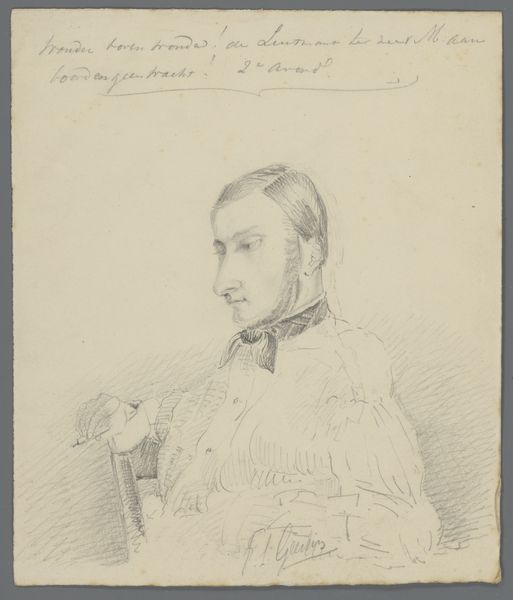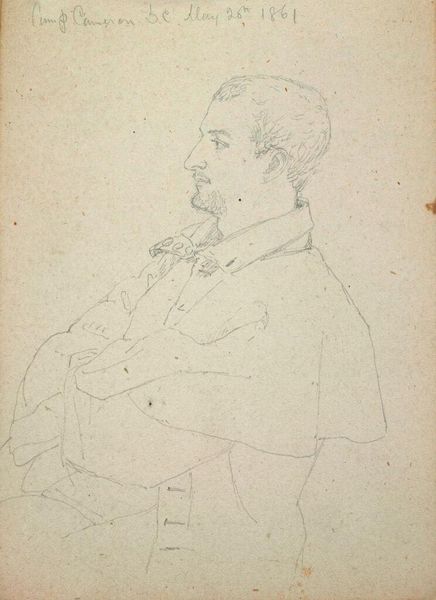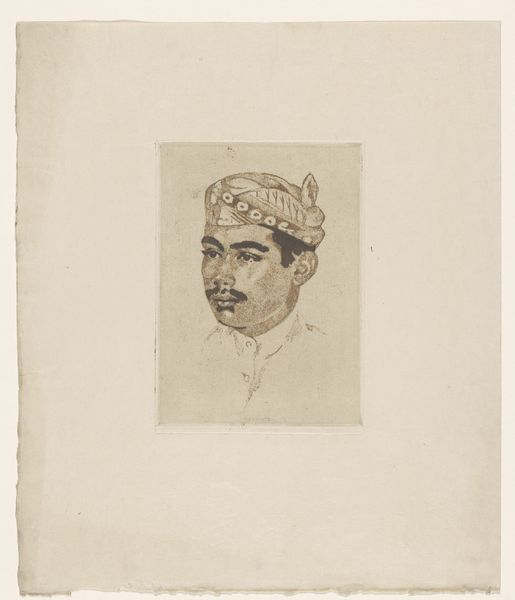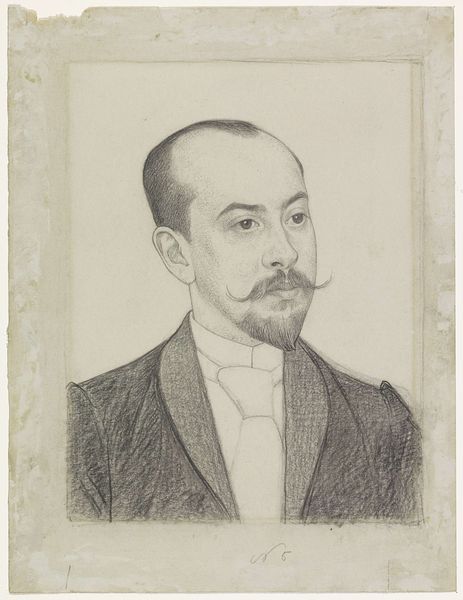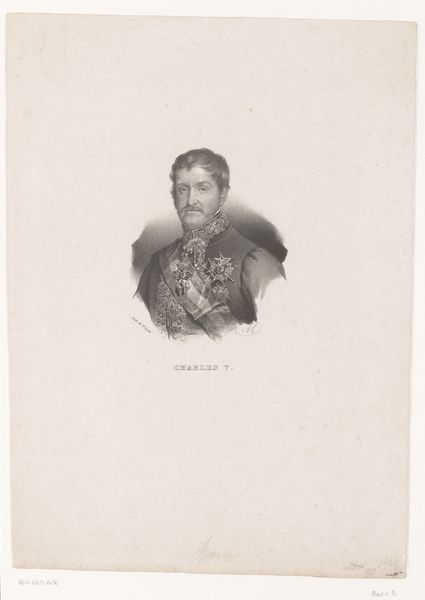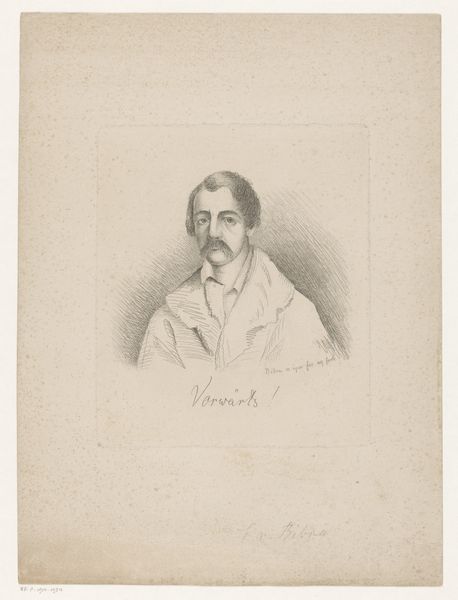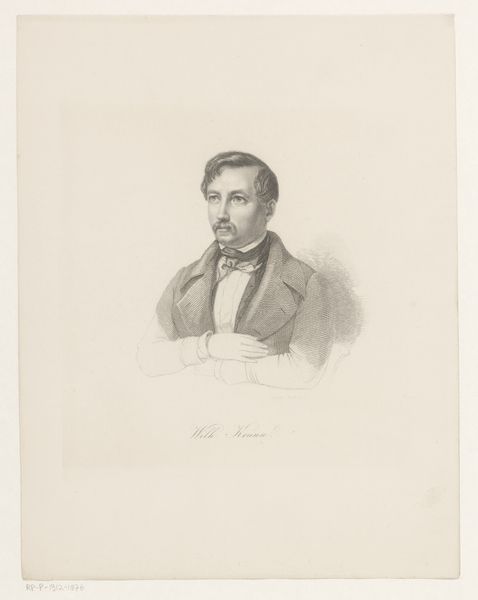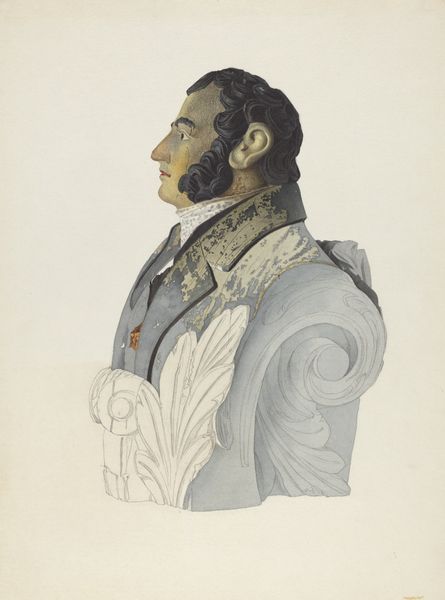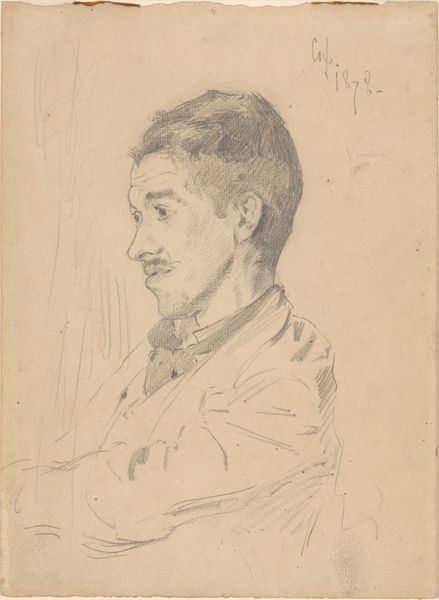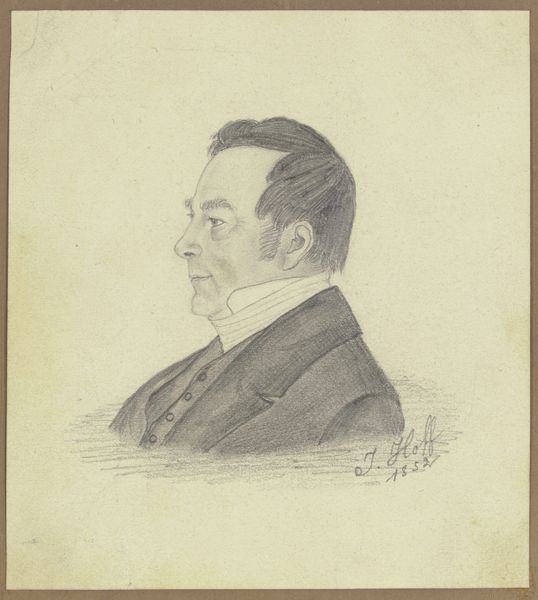
drawing, pencil
#
portrait
#
pencil drawn
#
drawing
#
asian-art
#
caricature
#
pencil drawing
#
pencil
#
portrait drawing
#
realism
Dimensions: height 320 mm, width 201 mm
Copyright: Rijks Museum: Open Domain
Editor: This is Christian Heinrich Gottlieb Steuerwald's "Portrait of a Javanese Official," made between 1848 and 1854. It's a pencil drawing, and the detail is incredible. What really strikes me is how delicately the texture of the clothing and head covering is rendered. What are your thoughts on this portrait? Curator: Well, looking at this drawing through a materialist lens, I'm struck by the use of pencil. What sort of access did Steuerwald have to materials in Java at this time? The very availability of quality drawing materials speaks to colonial trade routes and resource extraction. Also, consider the social context: this isn't just any portrait. It’s the portrait of an official, a man with likely ties to power structures. The means by which this portrait came to be—did the official commission it? What was Steuerwald’s relationship to the sitter, his own position within colonial structures – these are critical questions. Editor: So, you're saying the artwork's materials and the circumstances surrounding its creation are key to understanding it? Curator: Precisely. It’s crucial to unpack the labor involved in making the artwork, both the artist's and the sitter's labour. What position did the portrayed man embody and defend through the colonist's art? How was he compensated? How much would an average Javanese worker need to work to have such a portrait created for him or her? The material reality shapes our interpretation. Editor: That's a perspective I hadn't fully considered. It moves beyond just the artistic skill and into the socio-economic factors. Curator: It certainly does. What appears simple - pencil on paper - becomes complex when we analyze the colonial mechanisms at play in the production and circulation of images like this. It reminds us to critically examine not only the ‘what’ but the ‘how’ and ‘why’ behind art. Editor: I see it now. It really shifts the focus from aesthetic appreciation to critical inquiry about production and power. Thank you, that was truly insightful. Curator: Indeed. Art always carries with it embedded markers of the context and method by which it came into existence, providing avenues for deeper critical analysis beyond just appreciation of artistic prowess.
Comments
No comments
Be the first to comment and join the conversation on the ultimate creative platform.
